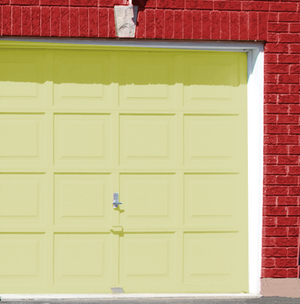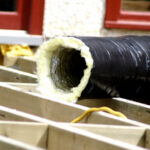Cathedral ceilings make a room feel much larger by following the roof line up to the peak. This is on many home owner’s wish lists, especially in master bedroom and living room areas. As esthetically pleasing as cathedral ceilings are, there are often problems with moisture, air leakage, and insulation values. This is because it is very difficult to properly insulate a cathedral ceiling and get enough airflow to provide proper ventilation. For this reason, the best method of insulating a cathedral ceiling is called the “hot roof method.”
Hot Roof Method
This method of insulating cuts off all ventilation into the cathedral ceiling. By sealing the cavities, moisture is not able to enter the cavities through free air flow as in a standard ventilated roof systems. However, this method does not work with all insulation materials and because of this, it is very important to use the right insulation.
Fiberglass insulation should never be used for hot roof cathedral ceiling applications as moisture issues will take place because of the conductive nature of fiberglass.
Fiberglass is spun glass fibers that insulate using the air pockets that the spun glass creates. The problem is that the glass conducts energy (hot or cold) changing the temperature of the air pockets created by the fiberglass material and drastically effecting the R-Value of the product.
Open Cell Spray Foam Insulation
Open cell spray foam insulation should never be used for hot roof cathedral ceiling applications because of it’s moisture absorbing nature.
Open cell spray foam is low density (1.5 lbs per cubic foot) and the cells that make up the foam are open, which means that they can absorb water. The R-value is roughly the same as fiberglass, about R-3.5 per inch. This means that there would need to be at least 10.5 inches of this type of insulation to meet minimum code for attic R-values. 10.5 inches of insulation that has water absorption properties is not a good idea.
Cellulose Insulation
Cellulose Insulation can be used in cathedral ceilings if it is installed using the dense pack method. Dense packing cellulose packs it in the rafter cavities at 3 Ibs per cubic foot. The settling rate of cellulose is 2.8 lbs per cubic foot so the material should not settle under normal circumstances. If moisture finds it’s way into cellulose, it is made of ground up newspaper so it displaces water from high to low concentration allowing the cellulose to self dry itself by dispersing the moisture within. Cellulose has an R-value of 3.8 per inch.
Closed Cell Spray Foam
Closed cell spray foam is the best choice for cathedral hot roofs as it does not absorb water and is currently the best air sealing material on the market. Closed cell spray foam not only insulates, but strengthens whatever it adheres to as it is a higher density (usually 2-3 lbs per cubic foot). With an R-value of R-7 per inch, this requires very little spray foam to create a very well insulated attic space that is moisture free and supper efficient by design.
Hot roof insulating methods have been used for many years on home with cathedral ceilings by Energy Star Homes, Wisconsin Focus on Energy Department of Energy Residential Weatherization Programs, and many more government and professional organizations.


